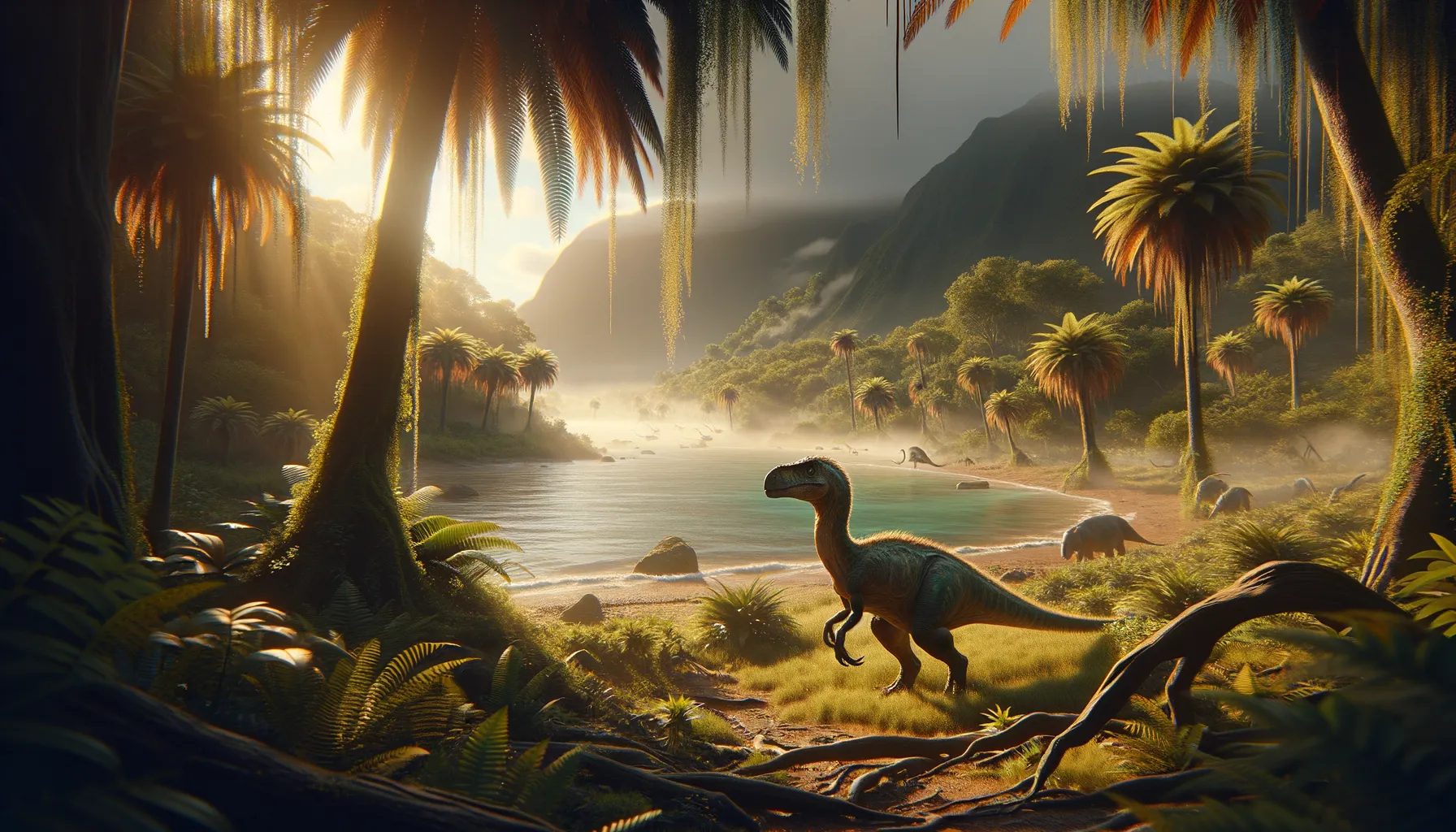
Atlascopcosaurus
A swift herbivore from Down Under's past.
Period
Cretaceous
Length
Roughly 3 meters (10 feet) long.
Height
Around 1.2 meters (4 feet) tall.
Weight
Approximately 150 kilograms (330 pounds).
Atlascopcosaurus was a small, bipedal dinosaur from the Early Cretaceous period that roamed what is now Australia. Known for its lightweight build, it likely had a herbivorous diet, feeding on the abundant plant life of the time. Its fossils were found in a region that was once a lush coastal environment, offering insight into the diverse ecosystem it inhabited. The discovery of Atlascopcosaurus added valuable information about the distribution of dinosaurs in the southern hemisphere.
Diet
Primarily herbivorous, Atlascopcosaurus fed on local plant material. Its diet likely consisted of ferns, cycads, and other low-lying vegetation present during its time.
Hunting
Though primarily a plant-eater, it had to avoid being hunted by predators. It likely relied on its speed and agility to escape threats, rather than engaging in pursuit.
Environmental challenges
Atlascopcosaurus lived in a world that was dynamically changing with fluctuating climates. Rising sea levels and volcanic activity posed significant environmental challenges. It had to adapt to these changes, which affected its food sources and habitat conditions.
Speed
Considered to be moderate for its size.
Lifespan
Estimated at 10 to 15 years.
First discovery
First discovered in 1984 in southeastern Australia.
Fun Facts
- Atlascopcosaurus was a small herbivorous dinosaur that lived around 125 million years ago during the early Cretaceous period.
- This dinosaur's name comes from the company Atlas Copco, which sponsored the expedition that led to its discovery in the 1980s.
- Atlascopcosaurus fossils were first found in what is now Victoria, Australia, highlighting the unique dinosaur fauna of this region.
- Despite its small size, it was likely a fast and agile runner, helping it escape predators of its time.
- Its teeth structure suggests it fed on soft, leafy plants, indicating a herbivorous diet.
- Atlascopcosaurus belonged to a group of dinosaurs known as ornithopods, which were generally bipedal plant-eaters.
- It provides valuable information about the diversity of small herbivorous dinosaurs in the southern hemisphere during the Cretaceous.
Growth and Development
Atlascopcosaurus experienced different growth stages, starting from hatchlings. As it matured, it underwent significant physical changes to support its bipedal lifestyle. Its development was influenced by environmental factors, shaping its survival strategies.
Habitat
Atlascopcosaurus inhabited regions that were once part of Gondwana, featuring lush, coastal environments rich in vegetation. These areas provided ample food sources and diverse ecosystems. The habitat would have included rivers and forests, supporting a variety of wildlife.
Interaction with other species
As a herbivore, Atlascopcosaurus shared its environment with both herbivorous and carnivorous species. It likely competed for food with other plant-eaters. Its interactions would have been cautious, particularly around potential predators.
Natural lifespan
Its natural lifespan was likely around a decade.
Reproduction
Reproduction involved laying eggs, similar to modern reptiles. Nesting areas would have been chosen for safety and accessibility to food resources. After hatching, juvenile dinosaurs required a period of growth before reaching maturity.
Social behaviour
Although not much is known, Atlascopcosaurus may have lived in small herds or groups for protection. Its social behavior likely included group foraging and collective alertness against predators.
Fossil locations
The primary fossils of Atlascopcosaurus were found in Victoria, Australia. These discoveries have been crucial in understanding the presence of dinosaurs on the continent. Such findings are significant for studying the distribution of dinosaur species during the Cretaceous period.
